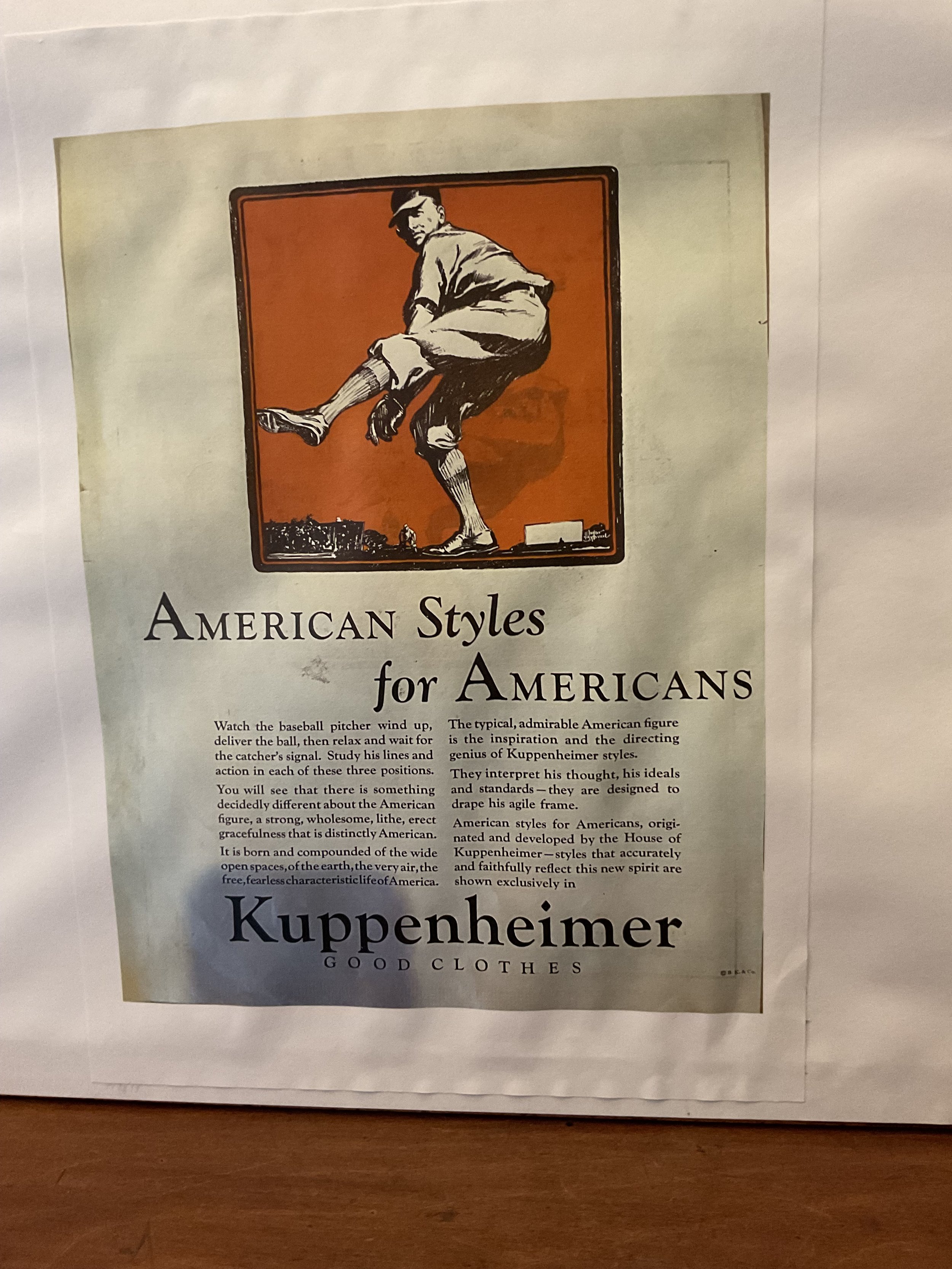 Image 1 of 6
Image 1 of 6

 Image 2 of 6
Image 2 of 6

 Image 3 of 6
Image 3 of 6

 Image 4 of 6
Image 4 of 6

 Image 5 of 6
Image 5 of 6

 Image 6 of 6
Image 6 of 6







French Antique Miniature Portrait
This French antique miniature portrait depictes a young boy. He is dressed in what appears to be 18th century clothing. The portrait is signed on the right hand side. It has been elegantly framed in wood. On the reverse side, the portrait has been backed in old print that appears to be religious text.
Miniature portraits first appeared in the courts of Europe in the 16th century. By the 18th century they were popular and widespread. They developed from the art of ‘illuminating’ handwritten books with illustrations and decorative borders. It is sometimes referred to as ‘limning’ a derivative of the term ‘minium’ or the red lead used by medieval illuminators. Miniature portraits were usually created on prepared card, copper or ivory. Gouache, watercolour or enamel was used on these surfaces. They were highly popular amongst the 16th century elites and remained popular until the development of the photograph is the mid19th century. Miniature portraits were often given as intimate gifts within family and friends or by optimistic males during courtship. On some occasions they were given as diplomatic gifts. During the second half of the 17th century, vitreous enamel painted onto copper became popular, especially in France. By the 18th century, portraits were painted with watercolour on ivory because it was relatively cheap to do so. They were often fitted into lockets, inside watch covers or pieces of jewellery so that they could be carried on the person. Sometimes miniature portraits were framed and placed on a stand, hung on the wall or fitted into snuff boxes. Some well known miniature portrait artists included, Jean Clouet (1485-1540), Francoise Clouet (1510-1572), Jean Petitot (1607-1672) and Jean Baptiste Isabey (1767-1855).
This miniature portrait is in excellent condition. It measures 11 cms by 11 cms.
This French antique miniature portrait depictes a young boy. He is dressed in what appears to be 18th century clothing. The portrait is signed on the right hand side. It has been elegantly framed in wood. On the reverse side, the portrait has been backed in old print that appears to be religious text.
Miniature portraits first appeared in the courts of Europe in the 16th century. By the 18th century they were popular and widespread. They developed from the art of ‘illuminating’ handwritten books with illustrations and decorative borders. It is sometimes referred to as ‘limning’ a derivative of the term ‘minium’ or the red lead used by medieval illuminators. Miniature portraits were usually created on prepared card, copper or ivory. Gouache, watercolour or enamel was used on these surfaces. They were highly popular amongst the 16th century elites and remained popular until the development of the photograph is the mid19th century. Miniature portraits were often given as intimate gifts within family and friends or by optimistic males during courtship. On some occasions they were given as diplomatic gifts. During the second half of the 17th century, vitreous enamel painted onto copper became popular, especially in France. By the 18th century, portraits were painted with watercolour on ivory because it was relatively cheap to do so. They were often fitted into lockets, inside watch covers or pieces of jewellery so that they could be carried on the person. Sometimes miniature portraits were framed and placed on a stand, hung on the wall or fitted into snuff boxes. Some well known miniature portrait artists included, Jean Clouet (1485-1540), Francoise Clouet (1510-1572), Jean Petitot (1607-1672) and Jean Baptiste Isabey (1767-1855).
This miniature portrait is in excellent condition. It measures 11 cms by 11 cms.
This French antique miniature portrait depictes a young boy. He is dressed in what appears to be 18th century clothing. The portrait is signed on the right hand side. It has been elegantly framed in wood. On the reverse side, the portrait has been backed in old print that appears to be religious text.
Miniature portraits first appeared in the courts of Europe in the 16th century. By the 18th century they were popular and widespread. They developed from the art of ‘illuminating’ handwritten books with illustrations and decorative borders. It is sometimes referred to as ‘limning’ a derivative of the term ‘minium’ or the red lead used by medieval illuminators. Miniature portraits were usually created on prepared card, copper or ivory. Gouache, watercolour or enamel was used on these surfaces. They were highly popular amongst the 16th century elites and remained popular until the development of the photograph is the mid19th century. Miniature portraits were often given as intimate gifts within family and friends or by optimistic males during courtship. On some occasions they were given as diplomatic gifts. During the second half of the 17th century, vitreous enamel painted onto copper became popular, especially in France. By the 18th century, portraits were painted with watercolour on ivory because it was relatively cheap to do so. They were often fitted into lockets, inside watch covers or pieces of jewellery so that they could be carried on the person. Sometimes miniature portraits were framed and placed on a stand, hung on the wall or fitted into snuff boxes. Some well known miniature portrait artists included, Jean Clouet (1485-1540), Francoise Clouet (1510-1572), Jean Petitot (1607-1672) and Jean Baptiste Isabey (1767-1855).
This miniature portrait is in excellent condition. It measures 11 cms by 11 cms.













































